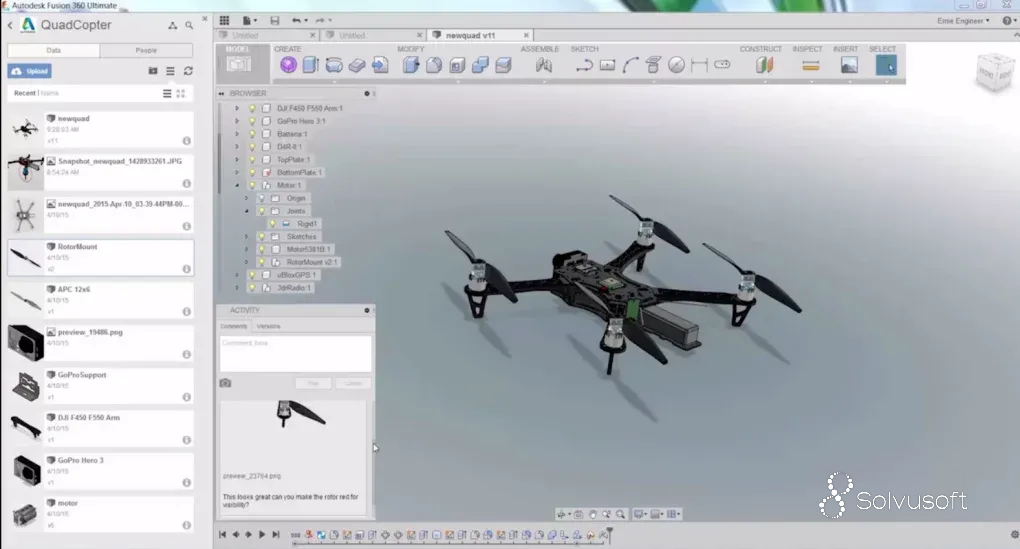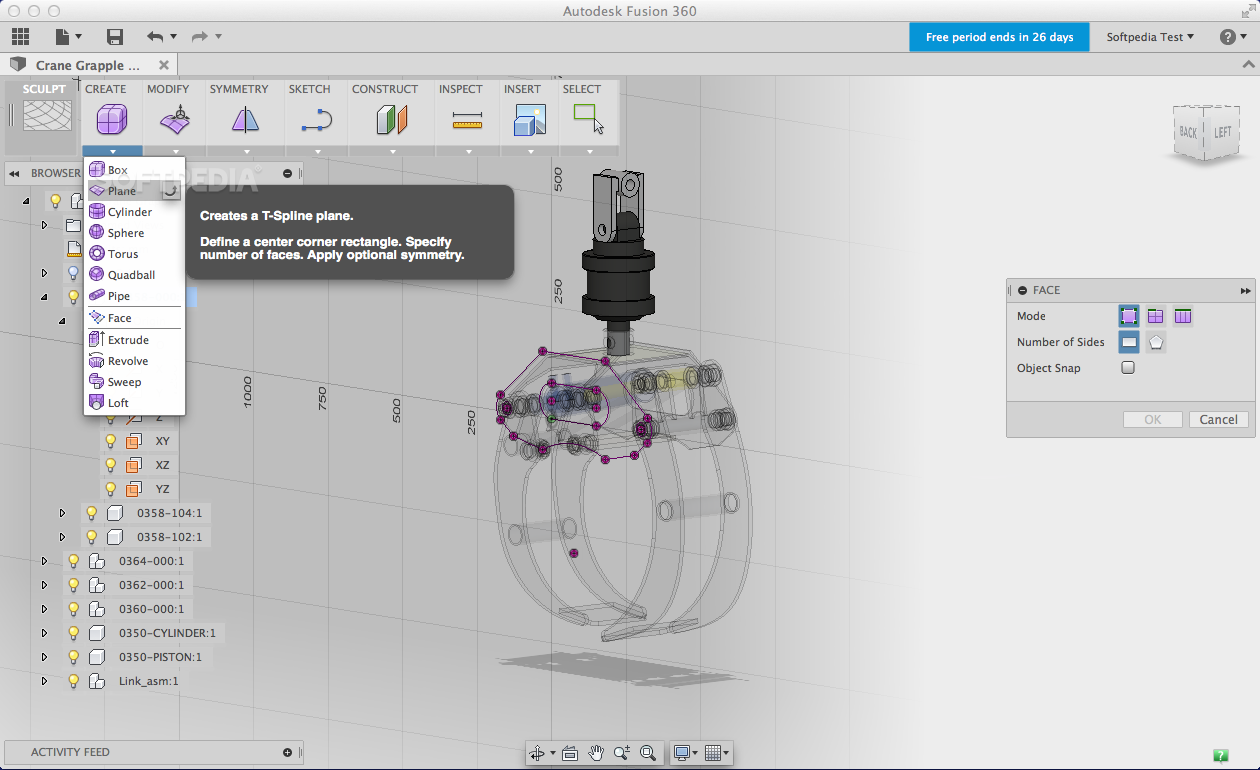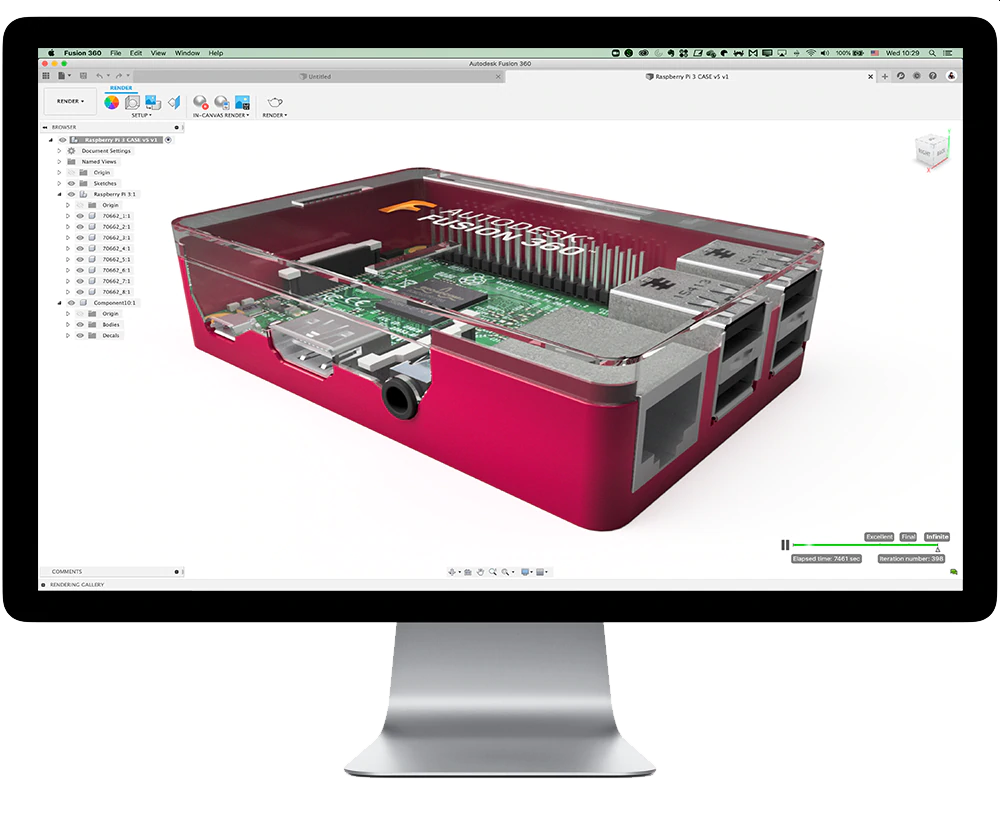

From here you’ll see the “Slicer for Fusion 360” option. With my lampshade file open, I’m going to select the “make” dropdown menu. It does not affect or alter any current design files that are open. You’ll then see that you can change the default modeling orientation, which only affects newly created files. To change your axis to “Y” up you’ll want to click your username in the upper-righthand corner. Yet, this streamlined workflow, that I’m about to show you, certainly outways its inconveniences. With that said, you’ll find that like all Autodesk products, Slicer has many nuances that can be annoying. This is understandably frustrating, as most users set their orientation default to be the “Z” axis up, as that works best for 3D printing and CNC workflows. Unfortunately, this is not changeable in Slicer, so you’ll want to change the orientation in Fusion 360 before you export your model, or your model will end up sideways.
#Fusion 360 mac software#
Because Fusion 360 used to have the default of the “Y” axis set to the “up” orientation, you’ll find that Slicer software is set to the “Y” axis being up. You can also use imported mesh files, such as an STL or OBJ files, that you grabbed from Thingiverse.Īdditionally, you’ll want to make sure your file is set up in the proper orientation. It’s important to note that this file can be a native file that was built-in Fusion 360 or an imported STEP file. You’ll want to have your desired file open in Fusion 360. Once you have “Slicer” installed on your computer then we’re ready to get started. The second project is a furniture project that you could cut out on a CNC router, as this slicer plugin works great for flat pack furniture designs. The idea with this project is that the shape of the lampshade is sliced up to be laser cut out of cardboard, where the pieces are then glued together. In this tutorial, I’m going to show you two different projects, both using the second method where we start with a model in Fusion 360.

Fortunately for us, this is quite easy to do because “Slicer” can be used as an add-in, helping automate the process. Then, from there, you’ll export the model to the “Slicer for Fusion 360” software.

The second way is to import your 3D model to Fusion 360 or to start with a Fusion 360 built model. The first way is to import your 3D file directly to the software. It’s important to note that there are two possible ways that you can get started with “Slicer for Fusion 360”. You can read the installation instructions and find the app URL on this tutorials resource page at /10… that’s /10.
#Fusion 360 mac how to#
However, for the sake of time, I’m not going to cover how to install the app in this tutorial.
#Fusion 360 mac free#
This free app is available for both Mac and Windows users. The neat thing about this tool is the fact that it works as a standalone app or as an add-in that you can access directly from Fusion 360. The slicing ability that I’m going to cover today was rolled into this free Fusion 360 add-in, as it was evident that users found great value in its capabilities. At some point, all of the free “123D Make” products were getting too complex to support so Autodesk decided to roll the important features into other existing products. The original intention of the app was to allow users to quickly and easily slice up 3D models to turn them into 2-Dimensional artifacts. However, those products were all deprecated and evolved into other existing products. What’s now called “Slicer for Fusion 360” used to be part of the “123D Make” product line that Autodesk produced. Start Learning Today – Enroll Now Transcript:īy the end of this video, you’ll know how to use the Fusion 360 Slicer app to split up your files for laser cutting or CNC router projects.īefore we dive right in, I want to spend the first 60 seconds explaining the background story of the Slicer app.


 0 kommentar(er)
0 kommentar(er)
